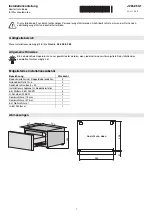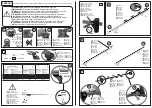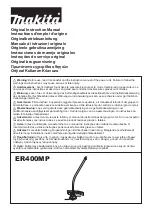
Page 19
Installation and Mounting
optoNCDT ILR 1191
The laser beam must be directed perpendicularly onto the surface of the target. In case of misalignment it is
possible that the measurement results will not always be accurate. Measurements against tilted targets are
possible but depend on the surface characteristics of the target.
For integration of the sensor, two different versions of mechanical attachment are available:
- Attachment to a lateral surface. The sensor provides three support pads, see
Fig. 5
, reference 1, with
mounting holes M4 x 6.
- Attachment to casing bottom. The sensor provides three support pads, see
Fig. 5
, reference 2, with
mounting holes M4 x 6.
The sensor will be aligned by a visible laser beam (pilot laser) with the target. To align the sensor, please
comply with the “Instructions for Operation“, see Chap.
9.
SMR
0.5 m
Signal
EMR
Measuring range
Measuring object
0
4 mA
20 mA
Fig. 6 Start of measuring range and signal characteristic
SMR = Start of measuring range EMR = End of measuring range
The zero-point of the sensor is identical with the outer surface plane of the front cover plate.
5.2
Reflector Mounting
The sensor measures distances to moving and static targets:
- in the range from 0.5 m up to 300 m for natural, diffuse reflecting surfaces with a reflectivity of 90 %,
- between 300 m and 3.000 m to a reflector (for example Scotchlite Engineer Grade type I, series 3290, from
3M)
The pilot laser, see
Fig. 2
, reference 6, supports the sensor alignment to a given target during commission-
ing. It qualifies as a class 2 (II) laser device and operates at 635 nm (red) in the visible range. The pilot laser
Содержание optoNCDT ILR 1191
Страница 1: ...ILR 1191 300 Instruction Manual optoNCDT ILR 1191...
Страница 6: ...Page 6 optoNCDT ILR 1191...
Страница 63: ......
















































